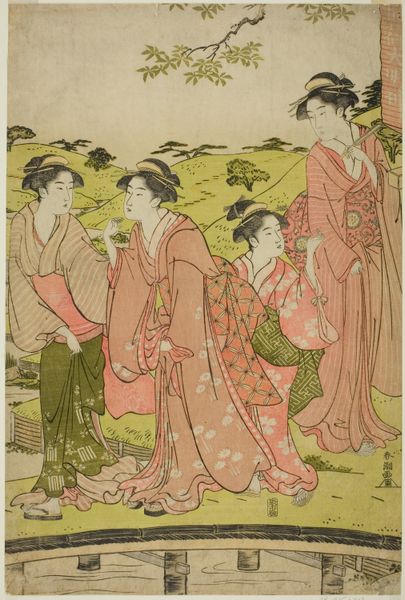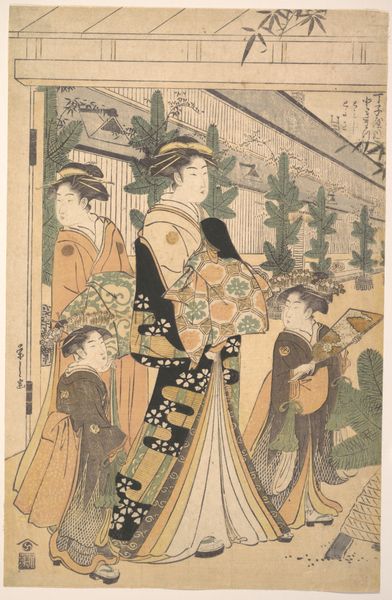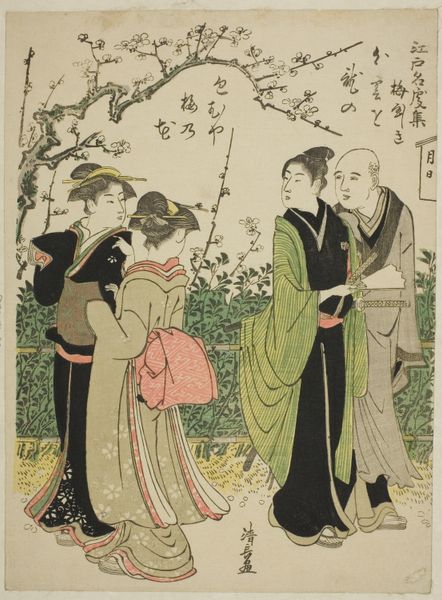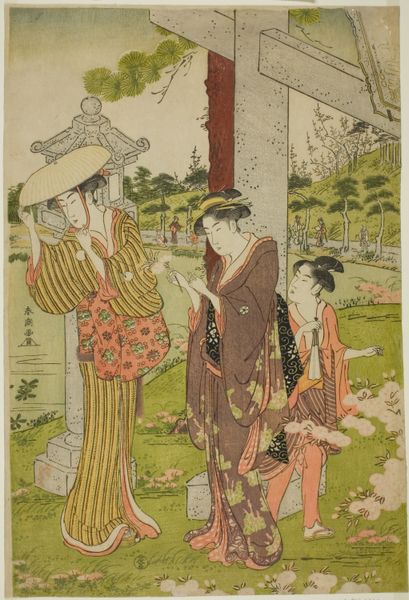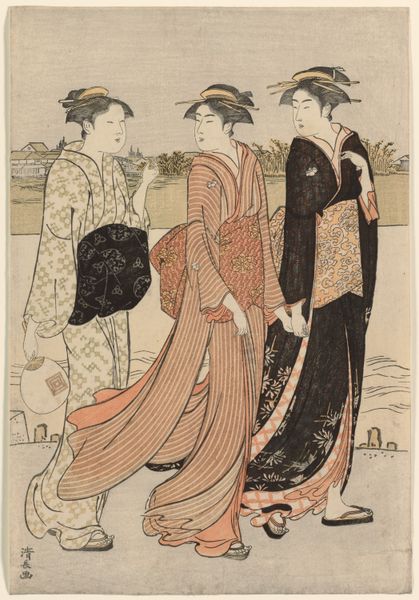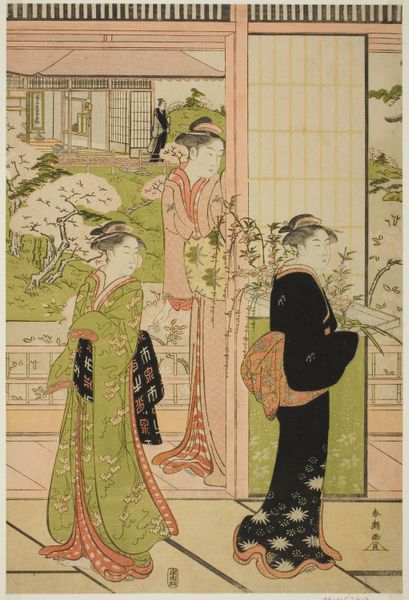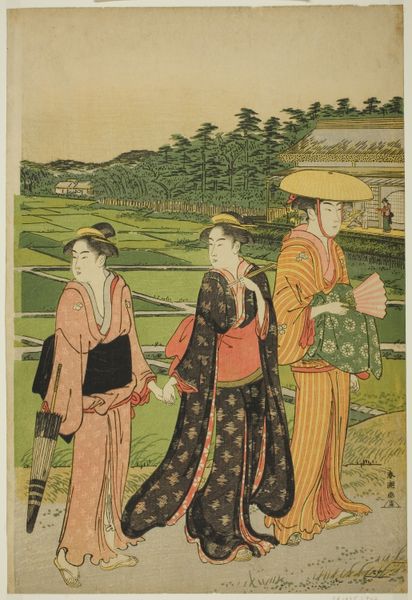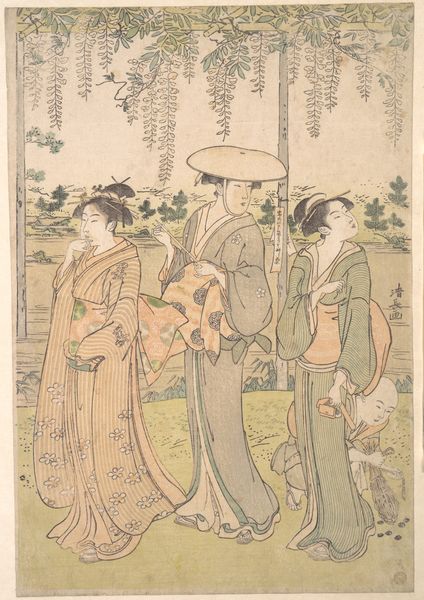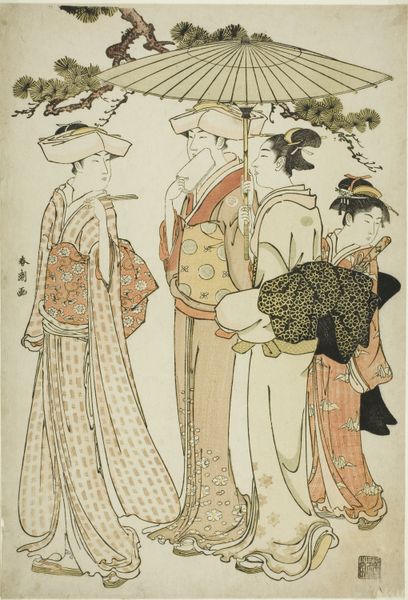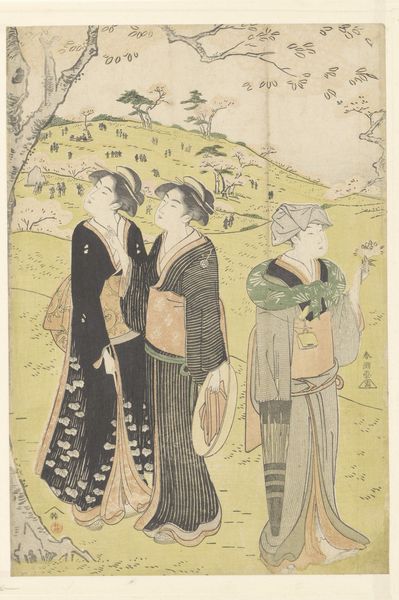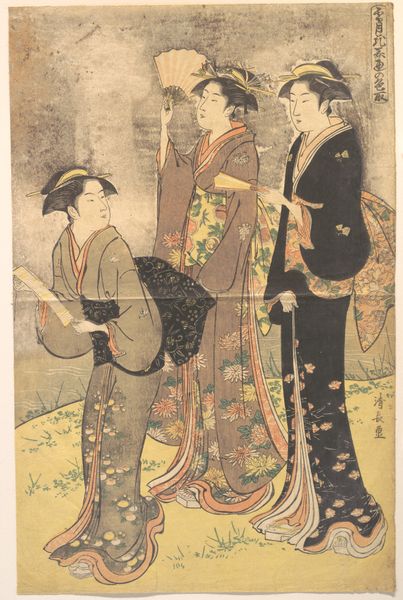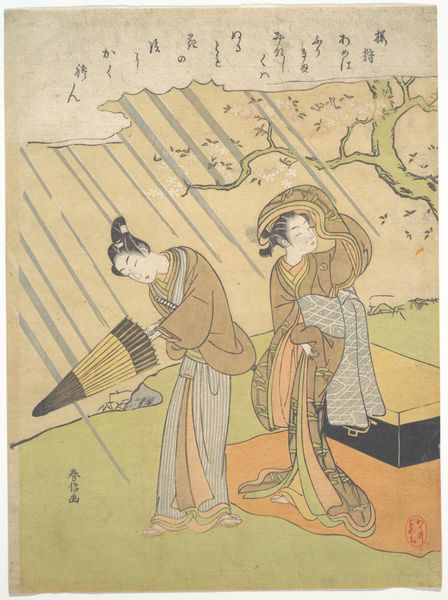
print, woodblock-print
# print
#
asian-art
#
landscape
#
ukiyo-e
#
figuration
#
woodblock-print
#
genre-painting
Dimensions: 38.8 × 25.6 cm
Copyright: Public Domain
Editor: Here we have Torii Kiyonaga’s woodblock print, "Women Visiting Mimeguri Shrine," dating back to about 1788. The figures, these fashionable women, are so graceful and elongated! What’s striking is the depiction of women in public spaces. How do you interpret this work? Curator: It's interesting you focus on their presence. I see this print as more than just a snapshot of women visiting a shrine. Consider the social context: Edo-period Japan had strict social hierarchies. These women, likely courtesans or from wealthy merchant families, represent a certain degree of female agency within those constraints. The 'floating world,' or ukiyo-e, prints like these captured the transient pleasures and beauty of that world. Editor: So, it’s not just about them visiting a shrine; it’s about *who* is visiting. How does the genre of Ukiyo-e influence our understanding? Curator: Precisely. Ukiyo-e wasn’t just decorative; it served as a form of social commentary and often celebrated female beauty and fashion, pushing against conservative norms, even if subtly. What do you make of their fashion? Their robes? Editor: I see each robe with unique floral patterns. It feels very individualized, and celebrates identity. It suggests that they have a role to play within the group as well. It's interesting how much information can be conveyed about a person through the details of dress. Curator: Absolutely, clothing was never just clothing; it signified status, affiliation, and personal expression. And consider the male figures depicted more minimally, almost in the background; is it commentary on gender and class? Editor: That’s something I hadn’t considered before. Now I’m seeing how the artwork is so rich, it's reflecting broader cultural dynamics, particularly the role of women and social identity. Thank you for pointing out these cultural aspects. Curator: And thank you for drawing us back to their individual presence in a public place! It is only by considering these elements jointly that we gain a true understanding of what Kiyonaga achieved.
Comments
No comments
Be the first to comment and join the conversation on the ultimate creative platform.
